San Bernardino, CA Pollen and Allergy Report for Summer 2023
Pollen Allergy Trends in San Bernardino, CA
When is pollen lowest in San Bernardino, CA?

February
Lowest month total PPM
Avg. PPM
When is pollen highest in San Bernardino, CA?

March
Highest month total PPM
Avg. PPM
How does pollen in San Bernardino, CA compare to California?
San Bernardino has a lower average PPM than the state of California.
San Bernardino yearly avg PPM:
California yearly avg PPM:
How does pollen in San Bernardino, CA compare to the USA?
San Bernardino has a lower average PPM than the USA.
San Bernardino yearly avg PPM:
USA yearly avg PPM:
Is pollen worse this year in San Bernardino, CA?
Spring 2023 was better than spring 2022.
Spring 2023 PPM:
Spring 2022 PPM:
Average PPM in San Bernardino, CA
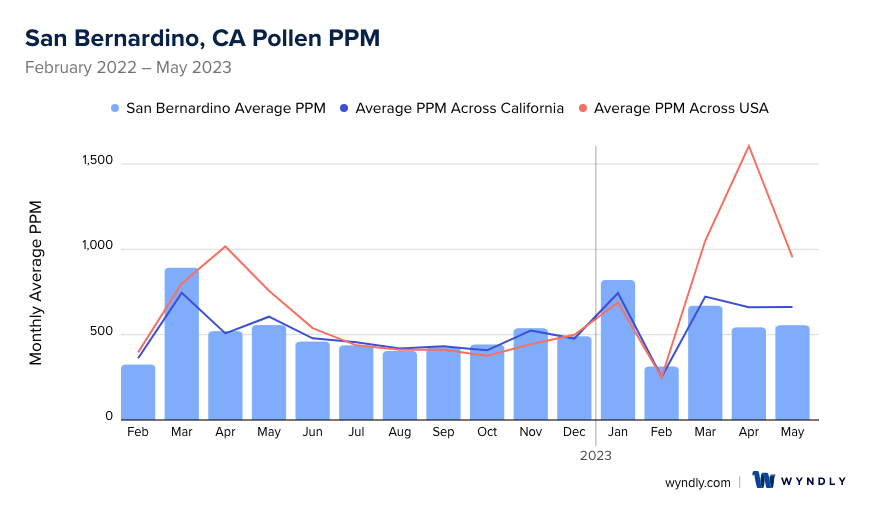
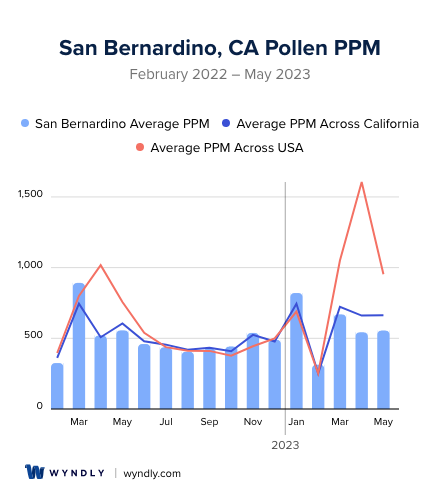
San Bernardino, CA Pollen and Allergy Breakdown by Month
Grass
When is grass pollen highest in San Bernardino, CA?
May has the highest grass pollen in San Bernardino, CA with an average PPM of
When is grass pollen lowest in San Bernardino, CA?
December has the lowest grass pollen in San Bernardino, CA with an average PPM of
Tree
When is tree pollen highest in San Bernardino, CA?
March has the highest tree pollen in San Bernardino, CA with an average PPM of
When is tree pollen lowest in San Bernardino, CA?
August has the lowest tree pollen in San Bernardino, CA with an average PPM of
Weed
When is weed pollen highest in San Bernardino, CA?
November has the highest weed pollen in San Bernardino, CA with an average PPM of
When is weed pollen lowest in San Bernardino, CA?
February has the lowest weed pollen in San Bernardino, CA with an average PPM of
San Bernardino, CA Pollen Monthly Breakdown by Pollen Type
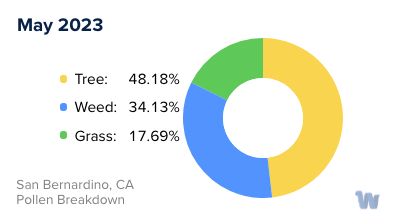
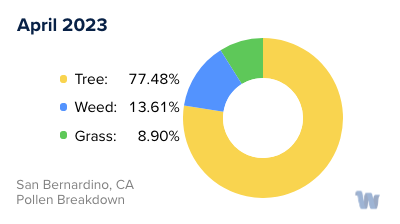
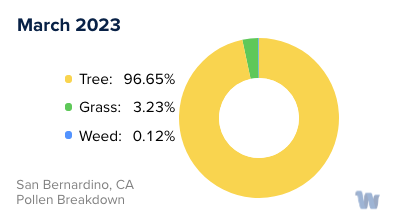
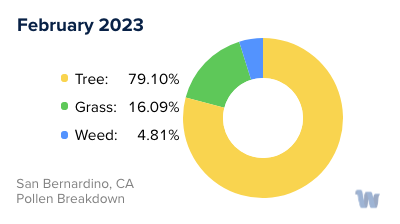
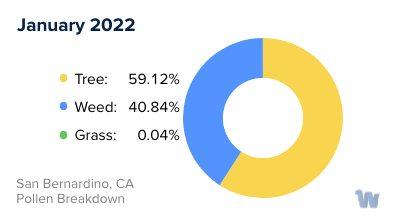
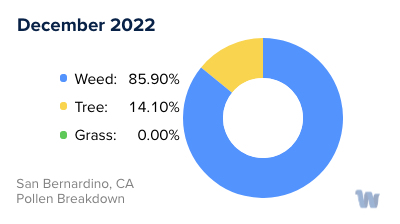
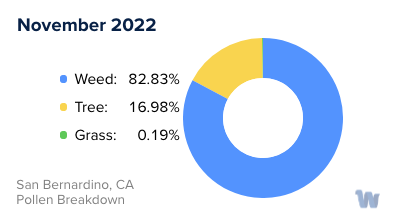
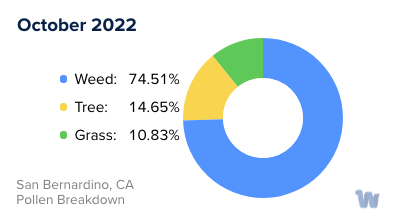
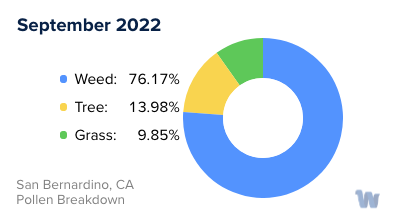
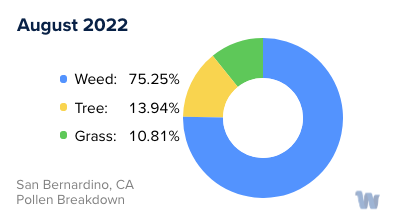
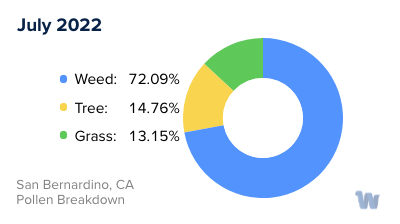
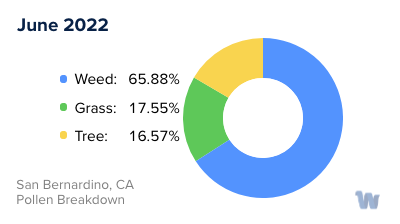
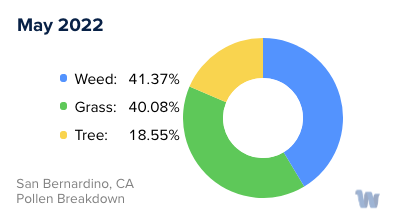
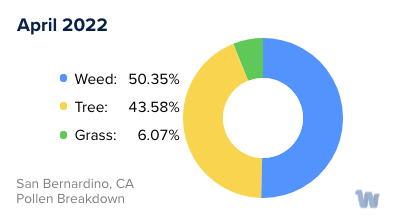
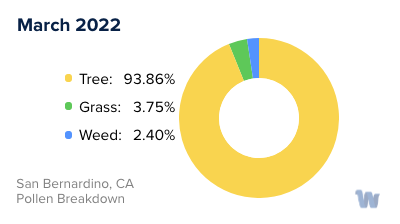
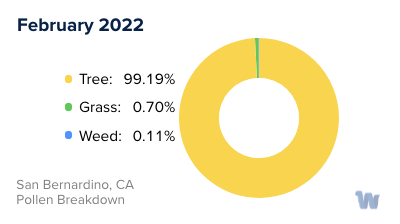
Pollen and Hay Fever in San Bernardino, CA
Pollen allergies, often referred to as hay fever, are a common issue for many residents of San Bernardino, California. This condition occurs when an individual's immune system reacts to pollen, viewing it as a threat, and responds by releasing chemicals that trigger allergic symptoms.
In San Bernardino, the types of pollen that frequently cause allergies are primarily from trees, grasses, and weeds. The prevalence of different types of pollen can vary depending on the time of year, making certain seasons more troublesome for allergy sufferers.
Tree pollen is often the earliest to arrive, typically starting in late winter and continuing through spring. Common trees in San Bernardino that produce allergenic pollen include oak, cedar, and pine. These trees release their pollen into the air where it can travel for miles, making it hard to avoid for those sensitive to it.
Grass pollen tends to peak in late spring and early summer. Bermuda grass, ryegrass, and Kentucky bluegrass are all common in San Bernardino and are known to be significant pollen producers. These grasses, often found in parks and lawns, can cause allergic reactions in many individuals.
Weed pollen, however, is the most prevalent in the late summer and fall. Ragweed is the most notorious weed for causing allergies, but other weeds such as pigweed, sagebrush, and Russian thistle can also cause problems. These plants thrive in the arid climate of San Bernardino, releasing large amounts of pollen into the air.
The timing and severity of pollen allergies can vary from year to year, and are influenced by a variety of factors including weather conditions, rainfall, and temperature. A particularly wet winter, for instance, can lead to a more intense tree and grass pollen season in the spring and early summer.
Understanding the types of pollen and their seasons in San Bernardino is the first step towards managing pollen allergies. However, it's important to remember that individual reactions to pollen can vary, and what triggers allergies in one person may not do the same in another. Ultimately, knowledge about local pollen sources and their seasons can help individuals prepare for and navigate the challenging allergy seasons in San Bernardino.


